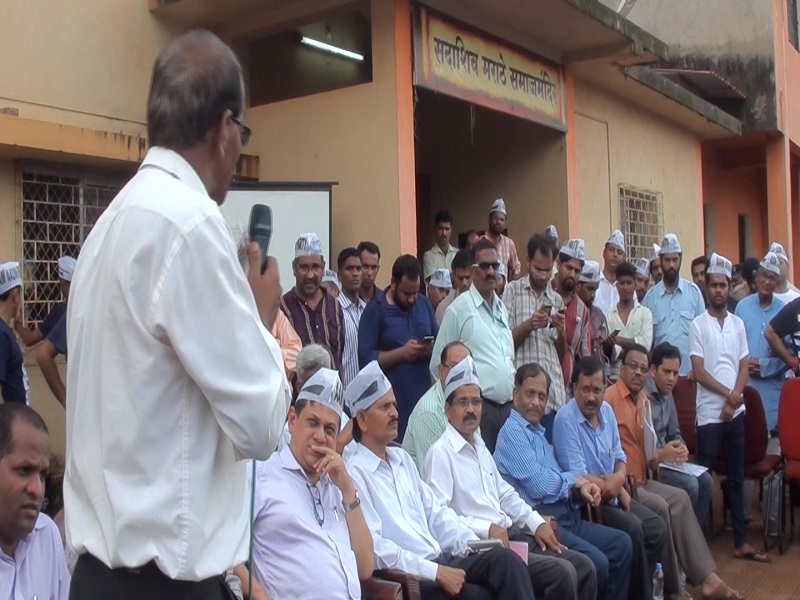For the first time in more than a year, we’re feeling some hope – or at least cautious optimism – that the pandemic could recede to the background. But experts want us to know that there is still a concern that new mutations of the virus could bring it back, and it might be even stronger.
A major concern right now is the Delta variant, a highly contagious (and possibly more severe) SARS-CoV-2 virus strain, which was first identified in India in December.
It then swept rapidly through that country and Great Britain as well, which has led to rising numbers of infections and deaths. The first Delta case in the United States was diagnosed a couple of months ago (in March) and now cases here are rapidly multiplying.
Inci Yildirim, a Yale Medicine pediatric infectious diseases specialist and a vaccinologist, isn’t surprised by what’s happening. “All viruses evolve over time and undergo changes as they spread and replicate,” she says.
But one thing that is unique about Delta is how quickly it is spreading, says F. Perry Wilson, a Yale Medicine epidemiologist. Around the world, he says, “Delta will certainly accelerate the pandemic.”
From what we know so far, people who are vaccinated against the coronavirus appear to be safe from Delta, but anyone who is unvaccinated and not practicing preventive strategies is at risk for infection by the new variant, the doctors say.
Here are five things you need to know about the Delta variant:
1. Delta is more contagious than the other virus strains
Delta is the name for the B.1.617.2. variant, a SARS-CoV-2 mutation that originally surfaced in India. The first Delta case was identified in December 2020, and the strain spread rapidly, soon becoming the dominant strain of the virus in both India and then Great Britain.
Toward the end of June, Delta had already made up more than 20 percent of cases in the US, according to Centers for Disease Control and Prevention (CDC) estimates. That number is rising swiftly, prompting predictions that the strain will soon become the dominant variant in the United States.
The World Health Organization (WHO) has called this version of the virus “the fastest and fittest.”
In mid-June, the CDC labeled Delta as “a variant of concern,” using a designation also given to the Alpha strain that first appeared in Great Britain, the Beta strain that first surfaced in South Africa, the two Epsilon variants first diagnosed in the US, and the Gamma strain identified in Brazil. (The new naming conventions for the variants were established by the WHO at the beginning of June as an alternative to numerical names.)
“It’s actually quite dramatic how the growth rate will change,” says Wilson. Delta is spreading 50 percent faster than Alpha, which was 50 percent more contagious than the original strain of SARS-CoV-2 – making the new variant 75 percent more contagious than the original, he says.
“In a completely unmitigated environment – where no one is vaccinated or wearing masks – it’s estimated that the average person infected with the original coronavirus strain will infect 2.5 other people,” Wilson says. “In the same environment, Delta would spread from one person to maybe 3.5 or 4 other people.”
“Because of the math, it grows exponentially and more quickly,” he says. “So, what seems like a fairly modest rate of infectivity can cause a virus to dominate very quickly – like we’re seeing now. Delta is outcompeting everything else and becoming the dominant strain.”
2. Unvaccinated people are at risk
People who have not been vaccinated against COVID-19 are most at risk. In the US, there is a disproportionate number of unvaccinated people in Southern and Appalachian states including Alabama, Arkansas, Georgia, Mississippi, Missouri, and West Virginia, where vaccination rates are low (in some of these states, the number of cases is on the rise even as some other states are lifting restrictions because their cases are going down).
Kids and young people are a concern as well.
“A recent study from the United Kingdom showed that children and adults under 50 were 2.5 times more likely to become infected with Delta,” says Yildirim.
And so far, no vaccine has been approved for children 5 to 12 in the US, although the US and a number of other countries have either authorized vaccines for adolescents and young children or are considering them.
“As older age groups get vaccinated, those who are younger and unvaccinated will be at higher risk of getting COVID-19 with any variant,” says Yildirim. “But Delta seems to be impacting younger age groups more than previous variants.”
3. Delta could lead to ‘hyperlocal outbreaks’
If Delta continues to move fast enough to accelerate the pandemic, Wilson says the biggest questions will be about transmissibility – how many people will get the Delta variant and how fast will it spread?
The answers could depend, in part, on where you live – and how many people in your location are vaccinated, he says.
“I call it ‘patchwork vaccination,’ where you have these pockets that are highly vaccinated that are adjacent to places that have 20 percent vaccination,” Wilson says. “The problem is that this allows the virus to hop, skip, and jump from one poorly vaccinated area to another.”
In some cases, a low-vaccination town that is surrounded by high vaccination areas could end up with the virus contained within its borders, and the result could be “hyperlocal outbreaks,” he says. “Then, the pandemic could look different than what we’ve seen before, where there are real hotspots around the country.”
Some experts say the US is in a good position because of its relatively high vaccination rates – or that conquering Delta will take a race between vaccination rates and the variant. But if Delta keeps moving fast, multiplying infections in the US could steepen an upward COVID-19 curve, Wilson says.
So, instead of a three- or four-year pandemic that peters out once enough people are vaccinated or naturally immune (because they have had the virus), an uptick in cases would be compressed into a shorter period of time.
“That sounds almost like a good thing,” Wilson says. “It’s not.”
If too many people are infected at once in a particular area, the local health care system will become overwhelmed, and more people will die, he says. While that might be less likely to happen in the US, it will be the case in other parts of the world, he adds. “That’s something we have to worry about a lot.”
4. There is still more to learn
One important question is whether the Delta strain will make you sicker than the original virus.
“Based on hospitalizations tracked in Great Britain [which has been about a month ahead of the US with Delta], the variant is probably a bit more pathogenetic,” Wilson says.
While more research is needed, early information about the severity of Delta includes a study from Scotland that showed the Delta variant was about twice as likely as Alpha to result in hospitalization in unvaccinated individuals (and vaccines reduced that risk significantly).
Another question focuses on how Delta affects the body. There have been reports of symptoms that are different than those associated with the original coronavirus strain, Yildirim says.
“It seems like cough and loss of smell are less common. And headache, sore throat, runny nose, and fever are present based on the most recent surveys in the UK, where more than 90 percent of the cases are due to the Delta strain,” she says.
It’s unclear whether Delta could cause more breakthrough cases – infections in people who have been vaccinated or have natural immunity from a prior COVID-19 infection, which so far have been rare in general.
“Breakthrough is a big question,” Wilson says. “At least with immunity from the mRNA vaccines, it doesn’t look like it will be a problem.”
A Public Health England analysis (in a preprint that has not yet been peer-reviewed) showed that at least two of the vaccines are effective against Delta.
The Pfizer-BioNTech vaccine was 88 percent effective against symptomatic disease and 96 percent effective against hospitalization from Delta in the studies, while Oxford-AstraZeneca (which is not an mRNA vaccine) was 60 percent effective against symptomatic disease and 93 percent effective against hospitalization.
The studies tracked participants who were fully vaccinated with both recommended doses.
“So, your risk is significantly lower than someone who has not been vaccinated and you are safer than you were before you got your vaccines,” Yildirim says.
Data on the effectiveness of other vaccines against Delta is not yet available, but some experts believe Moderna may work similarly to Pfizer, since both are mRNA vaccines. There is no information at this point about Johnson & Johnson’s effectiveness against Delta, although it has been shown to help prevent hospitalizations and deaths in people infected with other variants.
Will vaccinated people need booster shots to protect against Delta? Once again, it’s too soon to know whether we will need a booster modified to target the Delta variant – or any other variant. (Nor do experts know with certainty yet if vaccinated people will need an additional shot at some point to boost the overall immunity they got from their first shots.)
There are additional questions and concerns about Delta, including Delta Plus – a subvariant of Delta, that has been found in the US, the UK, and other countries. “Delta Plus has one additional mutation to what the Delta variant has,” says Yildirim. This mutation, called K417N, affects the spike protein that the virus needs to infect cells, and that is the main target for the mRNA and other vaccines, she says.
“Delta Plus has been reported first in India, but the type of mutation was reported in variants such as Beta that emerged earlier. More data is needed to determine the actual rate of spread and impact of this new variant on disease burden and outcome,” Yildirim adds.
5. Vaccination is the best protection against Delta
The most important thing you can do to protect yourself from Delta is to get fully vaccinated, the doctors say. That means if you get a two-dose vaccine like Pfizer or Moderna, for example, you must get both shots and then wait the recommended two-week period for those shots to take full effect. Whether or not you are vaccinated, it’s also important to follow CDC prevention guidelines that are available for vaccinated and unvaccinated people.
“Like everything in life, this is an ongoing risk assessment,” says Yildirim. “If it is sunny and you’ll be outdoors, you put on sunscreen. If you are in a crowded gathering, potentially with unvaccinated people, you put your mask on and keep social distancing. If you are unvaccinated and eligible for the vaccine, the best thing you can do is to get vaccinated.”
Of course, there are many people who cannot get the vaccine, because their doctor has advised them against it for health reasons or because personal logistics or difficulties have created roadblocks – or they may choose not to get it.
Will the Delta variant be enough to encourage those who can get vaccinated to do so? No one knows for sure, but it’s possible, says Wilson, who encourages anyone who has questions about vaccination to talk to their family doctor.
“When there are local outbreaks, vaccine rates go up,” Wilson says. “We know that if someone you know gets really sick and goes to the hospital, it can change your risk calculus a little bit. That could start happening more. I’m hopeful we see vaccine rates go up.”
This article was first published on Futurity and is republished here under a CC BY 4.0 license. Read the original article.


 Local7 years ago
Local7 years ago
 Crime8 years ago
Crime8 years ago
 Local8 years ago
Local8 years ago
 Top Stories2 years ago
Top Stories2 years ago
 Crime8 years ago
Crime8 years ago
 Crime8 years ago
Crime8 years ago
 Sports11 months ago
Sports11 months ago
 Crime8 years ago
Crime8 years ago






You must be logged in to post a comment Login